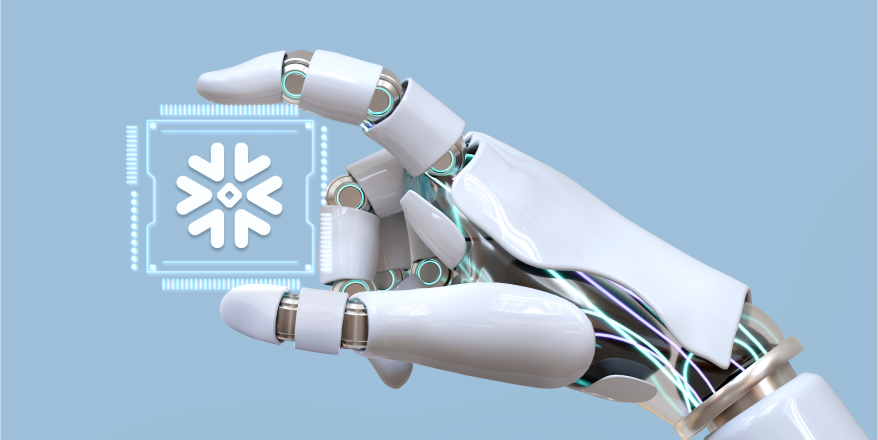The Impact of AI and Big Data on Molecular Diagnostic Accuracy and Speed
Introduction:
The integration of artificial intelligence (AI) and Big Data into molecular diagnostics is transforming the diagnostics landscape. As next-generation sequencing and high-throughput screening technologies expand rapidly, traditional diagnostic methods find it increasingly difficult to keep up with biological data. Algorithms that employ artificial intelligence are capable of analyzing and uncovering massive datasets, locating biomarkers that would otherwise escape human detection.
This article will expand on the role of AI in molecular diagnostics, Big Data’s contribution, IoT’s synergy with AI/Big Data and key applications in the real world. As we delve deeper into this topic, it becomes clear that the synergy between AI and Big Data is not merely enhancing molecular diagnostics; it is redefining the very foundations of precision diagnostics.

An overview of molecular diagnostics
The field of molecular diagnostics is rapidly growing as we improve our ability to detect and analyze various substances at the molecular level. Among its many applications, this technology is particularly useful for quantitative analysis, detecting food adulteration, and identifying illegal drugs. A molecular diagnostics procedure uses sophisticated techniques such as polymerase chain reaction (PCR), next-generation sequencing (NGS), and mass spectrometry to identify contaminants, verify food authenticity, and detect illicit substances in pharmaceuticals using precise and reliable methods.
These techniques are relatively inexpensive and highly sensitive, making them ideal for use in a variety of fields. Additionally, molecular diagnostics can be used to detect diseases and monitor the effectiveness of treatments.
The Role of AI in Molecular Diagnostics
Integrating artificial intelligence (AI) into molecular diagnostics enables us to analyze vast amounts of data generated by molecular tests, identifying patterns and correlations that may not be readily apparent to human analysts. This strengthens diagnostic accuracy by bringing together the combined experience of the platform, with the decision making capability of the human analyst. In addition, it reduces turnaround times, and supports clinicians in making informed decisions tailored to individual patient profiles.
Moreover, AI can assist in predictive analytics by evaluating patient data alongside historical outcomes, helping to forecast disease progression or treatment responses. As we continue to harness the power of AI in molecular diagnostics, we can expect significant advancements that will improve patient care and outcomes across various medical fields.
Key Aspects of AI in Molecular Diagnostics
Data Analysis and Pattern Recognition: AI algorithms utilize advanced machine learning techniques to analyze vast amounts of molecular data, including genomic sequences and proteomic profiles. This capability enables the identification of patterns and anomalies that may not be easily discernible by human analysts, improving diagnostic accuracy.
Precise Imaging Techniques: AI has altered molecular imaging through deep learning models. These models improve image quality and diagnostic precision by facilitating tasks such as image segmentation, reconstruction, and differential diagnosis generation. This facilitates detecting early signs of diseases.
High-Dimensional Data Handling: The emergence of high-throughput technologies has resulted in an explosion of molecular data. AI techniques, particularly deep learning, are essential for managing “big data” by building predictive models that amplify the interpretation of complex datasets, such as those generated from genomic sequencing and mass spectrometry.
Big Data’s Contribution to Molecular Diagnostic
Molecular diagnostics is changing as a result of big data, which increases accuracy considerably through advanced quantitative analysis. By leveraging vast datasets, researchers can refine diagnostic processes and improve the reliability of results.
Here are the key contributions of Big Data:
- Integration of Diverse Data Sources: Big data allows for the integration of various types of molecular data, including genomic, proteomic, and metabolomic information. This comprehensive approach enables a more holistic understanding of molecular structure, leading to improved diagnostic accuracy through the identification of complex biological patterns .
- Enhanced Quantitative Analysis: The application of big data analytics in quantitative molecular diagnostics allows for precise measurement of biomarker levels.
- Real-Time Data Processing: Big data technologies facilitate real-time processing and analysis of molecular diagnostic data.
- Machine Learning and Predictive Analytics: The use of machine learning algorithms on large datasets helps in developing predictive models that increase diagnostic accuracy. These models can identify subtle patterns within complex datasets, improving the ability to diagnose based on their molecular signatures.

IoT combined with AI and Big Data:
The Internet of Things (IoT) has a pivotal role in the evolution of molecular diagnostics, particularly when combined with artificial intelligence (AI) and big data. The interconnected nature of IoT devices enables real-time data collection and monitoring from various sources, which is crucial for accurate diagnostics. Sensors and smart devices can gather molecular data continuously, providing a wealth of information that can be analyzed to detect various substances.
The integration of AI and big data analytics into IoT systems transforms the capabilities of molecular diagnostics significantly. AI algorithms can process the vast amounts of data generated by IoT devices, identifying patterns and anomalies that would be challenging for human analysts to detect. This capability not only improves diagnostic accuracy but also reduces the time required for analysis.
The combination of IoT, AI, and big data is set to boost molecular diagnostics by enhancing accuracy, accelerating drug discovery, and personalizing quantitative analysis, ultimately improving diagnostics outcomes.
Application of IoT, Big Data, and AI in molecular diagnostics:
As IoT, Big Data, and Artificial Intelligence are integrated into molecular diagnostics, healthcare is becoming more accurate, fast, and accessible.
The following are a few notable examples:
- Enhanced Diagnostic Accuracy through AI Algorithms:
Application: Artificial Intelligence-driven tools analyze imaging or molecular data to improve diagnostic accuracy for cancers and genetic disorders.
Impact: A number of variables can be processed simultaneously using these algorithms, which can lead to more accurate diagnoses compared to traditional methods that rely on a limited number of indicators.
- IoT-Based Health Monitoring Systems:
Application: A new IoT system developed by researchers continuously collects vital signs from patients (e.g., heart rate, blood pressure).Through this system health care providers are able to access data via the cloud through microcontrollers.
Impact: As a result of this real-time monitoring capability, timely interventions can be made according to patient data, resulting in significant improvements in patient outcomes.
- Research and Development Acceleration
Application: Using big data analytics, drug development can be streamlined by identifying potential drug targets or repurposing existing drugs.
Impact: This reduces the amount of time and money spent on clinical trials and shortens the time to market for new therapies.
Conclusion:
In conclusion, the synergy between AI and big data is not just enhancing molecular diagnostics; it is fundamentally reshaping the landscape of precision quantitative analysis. As these technologies continue to evolve, they promise to deliver even more significant improvements in patient care, disease management, and overall health outcomes. The future of molecular diagnostics is undoubtedly bright, driven by the relentless pursuit of accuracy and efficiency in understanding complex biological systems.

